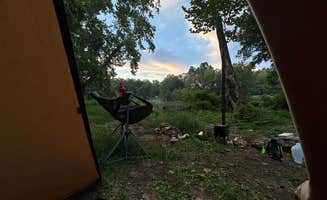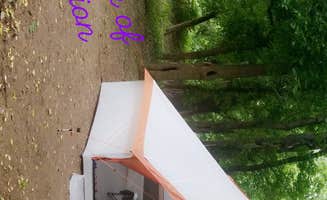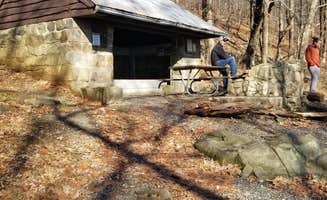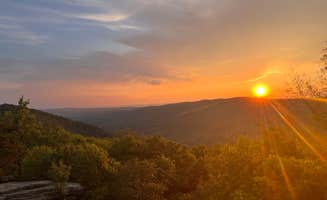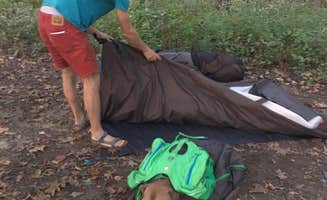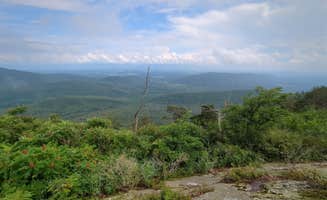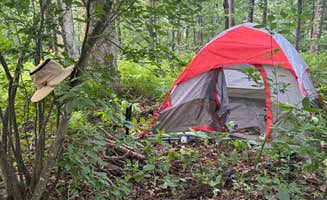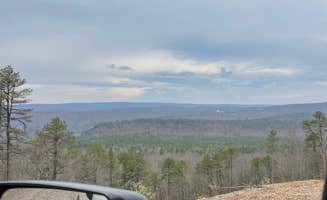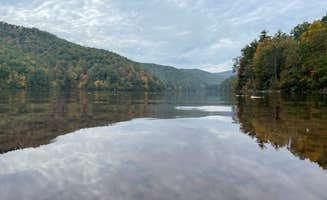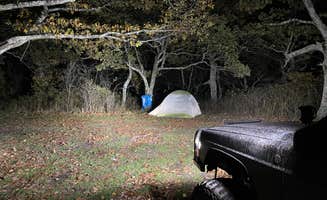Rustic camping near Rileyville, Virginia offers several backcountry opportunities with elevations ranging from 600 to 3,000 feet in the surrounding mountain terrain. The area sits at the junction of the Blue Ridge Mountains and Shenandoah Valley, creating diverse microclimates that affect camping conditions throughout the year. Summer temperatures can reach 90°F while winter nights often drop below freezing, requiring appropriate seasonal gear for overnight stays.
What to do
Hike to mountain vistas: The 4-mile trail to Veach Gap - GWNF - Backpacking Site provides significant elevation gain of 1,200 feet but rewards with expansive views. "Breathtaking views of the Shenandoah River and surrounding mountains. Very much worth the 4 mile hike up to the site," notes camper TJ W.
Fish in local waterways: South Fork Shenandoah River camping areas provide direct river access for anglers. The sites feature boat launches suitable for canoes and kayaks. "The road to get to the campsite was well maintained and easy to get to... Each site had its own fire pit. Quiet and peaceful," reports Sumner C.
Explore nearby trail networks: Multiple interconnected trails surround Little Fort Campground, offering day hiking opportunities of varying difficulty. "Nice flat camp site with picnic table and fire pit. Comes with tent pad but surface is too hard to use pegs," mentions Zack B., highlighting the established camping areas connected to trail systems.
What campers like
Ridgeline camping with views: At higher elevations, the clear vantage points provide exceptional stargazing and photography opportunities. "Cell service at the top (not during the hike or on the road to the trailhead so prepare directions). Went up in November with beautiful weather, fall leaves changing and great company," shares a visitor about Veach Gap.
Secluded waterfront sites: Riverside camping spots offer natural white noise and fishing access. At South Fork Shenandoah River, according to heather, "The site was wonderful! Not too many spaces so it can fill up quick. There is a launch in the middle, so there is a bit of come and go."
Self-registration simplicity: Several campgrounds use straightforward check-in systems without reservations. At Little Fort Campground, "You select a campsite by flipping a washer on a hook on the board from green to red. Flip it back when you leave," explains A Dan needs A.
What you should know
Limited or no cell service: Most campgrounds in the area have minimal connectivity. "This app says T-Mobile access, I'm a T-Mobile customer, no reception at all but drive 5 minutes back down the mountain and you're good to go," notes a Little Fort Campground visitor.
Water availability concerns: Many backcountry sites require carrying all water needs. Jon N. cautions about Veach Gap: "There is no water after the first mile. I have seen a small trickle part way up the mountain, but don't count on it. Pack up all the water you will need for the day/evening/morning."
Weekend crowds: Popular sites fill quickly, especially during peak seasons. "Got the last site at 6PM on the Friday of Memorial Day weekend," reports Matthew M. about Little Fort Campground, indicating visitors should arrive early on weekends or holidays.
Tips for camping with families
Select established sites: For families, campgrounds with basic amenities provide easier camping experiences. "Great established free campground! We got the last spot around 7pm. Site had a fire pit, table, parking spot, and tent platform," says Sawyer B. about Little Fort Campground.
Prepare for wildlife encounters: The region hosts significant wildlife including bears. At Laurel Prong Trail Dispersed, Allan M. reports: "Bears were constantly checking out our tent during night... 100% do not have food scents near your tent."
Consider lower elevation sites: For easier access with children, choose locations with minimal hiking requirements. "About as flat as you'll get, the hike here was nice. It's a decently private spot with the trail close by," notes a visitor to Laurel Prong Trail Dispersed camping area.
Tips from RVers
Check road conditions: Forest service roads can be challenging for larger vehicles. At Wolf Gap Recreation Area, Kevin C. notes, "The road leading to the camp site from Wardensville was in excellent condition all the way to the camp site," though this isn't always the case at other locations.
Look for level parking: Many primitive sites have uneven parking areas. "Many of the car parking pads are not level. But the tent pads appear to be," observes VanRumschpringa V. about Wolf Gap Recreation Area, a consideration important for RVs and trailers.
Site size limitations: Most dispersed camping near Rileyville accommodates smaller rigs only. According to reviews, "Most sites have a paved parking platform and then a second tier for the camp site. All sites are quite large and include picnic tables, fire rings and large tent platforms."


